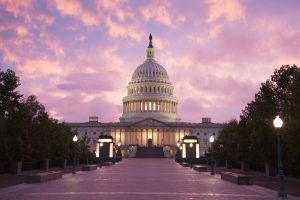
Both the Federal Reserve and the U.S. Department of the Treasury announced plans Monday morning to provide additional liquidity into the economy and support for households to combat the impact of COVID-19.
A statement from the Treasury states Secretary Steven Mnuchin approved the expansion of the Money Market Mutual Fund Liquidity Facility (MMLF) and Commercial Paper Funding Facility (CPFF). The CPFF was expanded to include “high-quality, tax-exempt commercial paper” and its pricing was reduced.
“This Administration is working with the Federal Reserve and will continue to take aggressive action to address liquidity issues. We expect to increase these three new facilities with additional funds from the ESF under the CARES Act that will be allocated to the Treasury,” said Mnuchin in a statement. “We are committed to providing relief for American workers and businesses, particularly small and medium-sized businesses and critical industries that are most impacted by the coronavirus. We will take all necessary steps to support them and protect the U.S. economy.”
The Treasury states this will support the flow of credit to cities and “immediately” enhance liquidity to help people and businesses impacted by the virus.
Mnuchin also approved the establishment of three new facilities under section 13(3) of the Federal Reserve act to provide liquidity to the financial system to support the flow of credit households and businesses.
New guidelines include:
- The Term Asset-Backed Securities Loan Facility (TALF): the Federal Reserve Bank of New York will provide loans to U.S. companies that are secured by certain eligible consumer and small business asset-backed securities, such as student loans, auto, and credit card loans, loans guaranteed by the Small Business Administration, and certain other assets.
- The Primary Market Corporate Credit Facility (PMCCF): the Federal Reserve Bank of New York will provide liquidity to U.S. financial and nonfinancial businesses by providing loan and bond financing to U.S. companies with investment-grade debt ratings.
- The Secondary Market Corporate Credit Facility (SMCCF): the Federal Reserve Bank of New York will purchase in the secondary market bonds issued by U.S. companies with investment-grade debt ratings.
The new programs, combined, will provide up to $300 billion in new financing. The Treasury’s use of the Exchange Stabilization Fund will provide $30 billion in equity to these facilities.
The Fed said Monday that it would use its “full range of tools” to support households, businesses, and the economy during these uncertain times.
The Federal Open Market Committee (FOMC) will purchase Treasury securities and agency mortgage-backed securities “in the amounts needed to support smooth marketing functioning” and transmission of monetary policy.
Last week the Fed announced it would purchase at least $500 billion in Treasury securities and at least $200 billion of mortgage-backed securities. The Federal Housing Finance Agency (FHFA) added that it has authorized Fannie Mae and Freddie Mac to enter into additional dollar-roll transactions—provide mortgage-back securities investors with short-term financing.
This is just the latest action by the FHFA during the outbreak of COVID-19, as it recently announced the suspension of foreclosures and evictions for at least 60 days and offering forbearance to borrowers impacted by the virus.

 DSNews The homepage of the servicing industry
DSNews The homepage of the servicing industry









